












With over thirty years of experience, Claggett/Rey Gallery is often trusted with the facilitation of historical pieces of fine art from various estates and individuals across the country. We pride ourselves on showcasing truly fine art in all mediums.
For inquiries and pricing, please contact us at 970-476-9350.
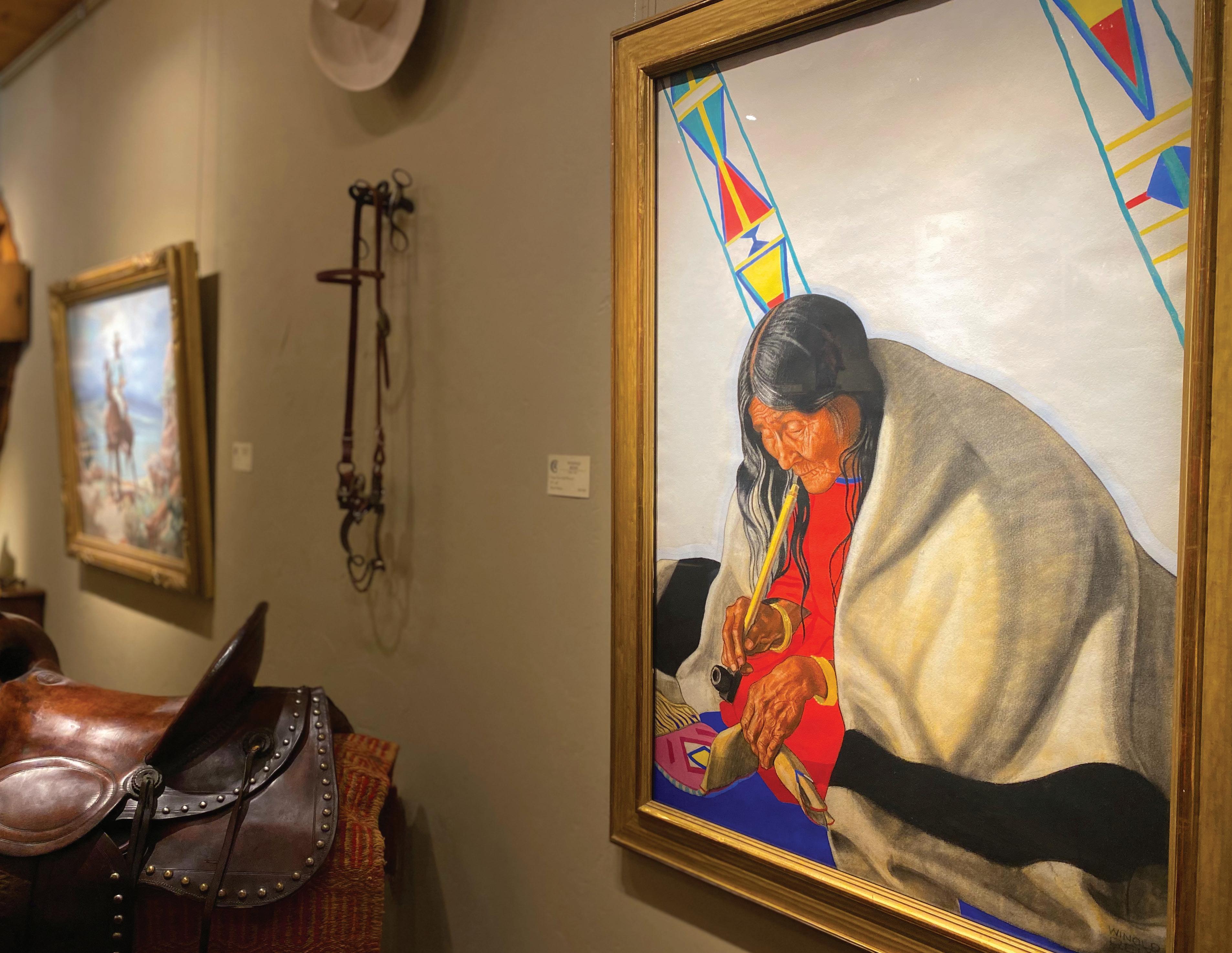
1879–1947
Carl Oscar Borg was born in Sweden and showed an affinity for art at a young age. At the age of twenty he embarked on a journey that would eventually lead him to arrive in America in 1903. After traveling around the west coast and in Central America, Borg was fortunate to be introduced to Phoebe Hearst, mother of newspaper magnate William Randolph Hearst, whose patronage would allow him to return to Europe to study and paint. By 1916 he was back in the United States and through Hearst gained the opportunity to travel to the Indian lands of the Southwest on behalf of the University of California’s Department of Ethnology and the US Department of the Interior. In the 1920s in California Borg taught art courses and worked as an art director for the film industry. By 1930 he returned to the Southwest and to the subjects he was most drawn.

“The Prospector”
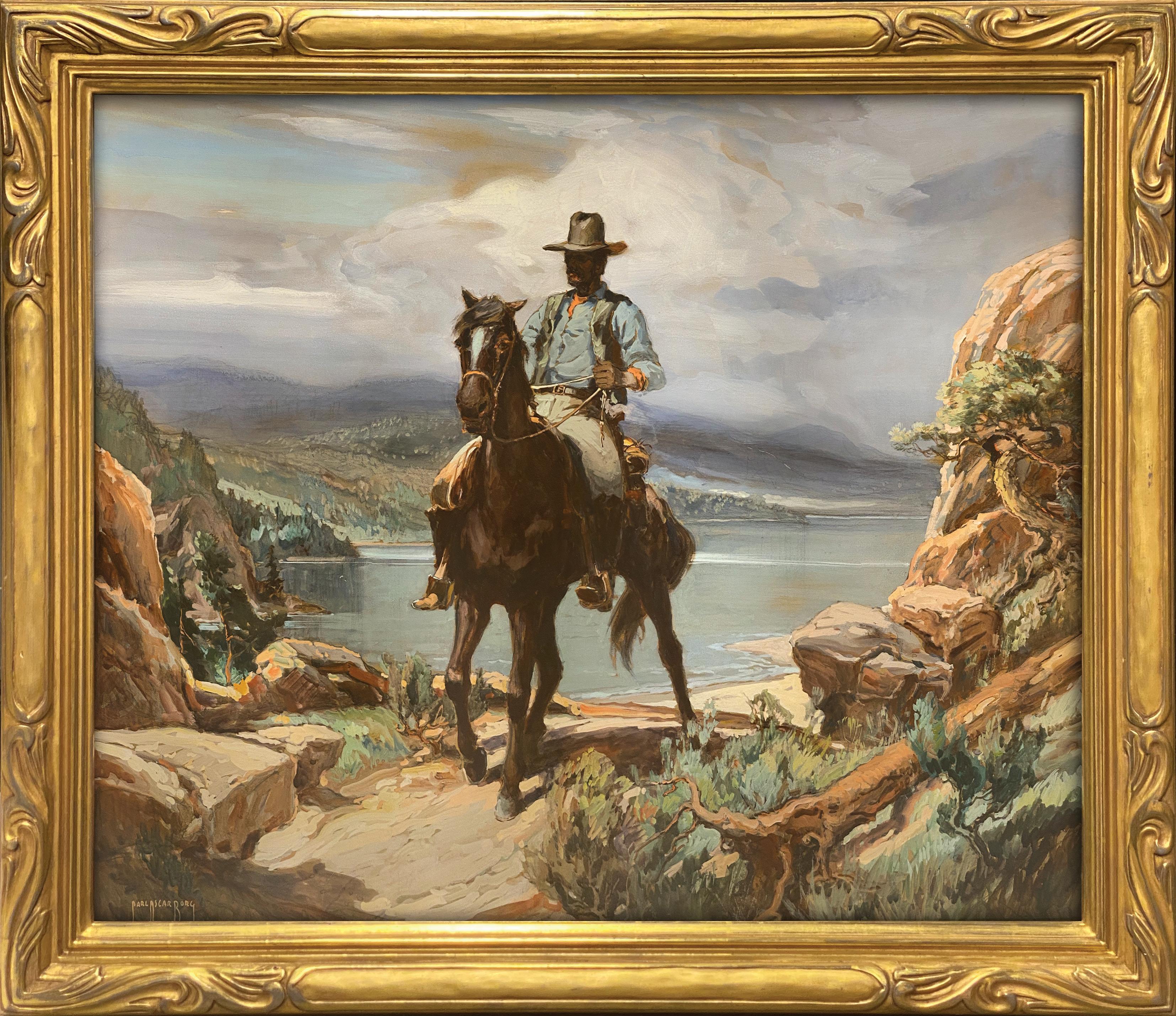




28"×34" (unframed) | 34¼"×39½" (framed) Gouache
 Claggett /Rey Gallery
Claggett /Rey Gallery

“The Prospector” depicts a man on horseback making his way through a desert landscape. Behind him stretches a river and mountainous landscape. Once gold was discovered out west, numerous prospectors would make their way to unknown lands to try their hand at uncovering riches. The subject of the present painting appears confident and unwavering in his search as he makes his way to the next location in which he hopes to stake his claim.
28"×34" (unframed) | 34¼"×39½" (framed)
Claggett/Rey Gallery “The Prospector” Gouache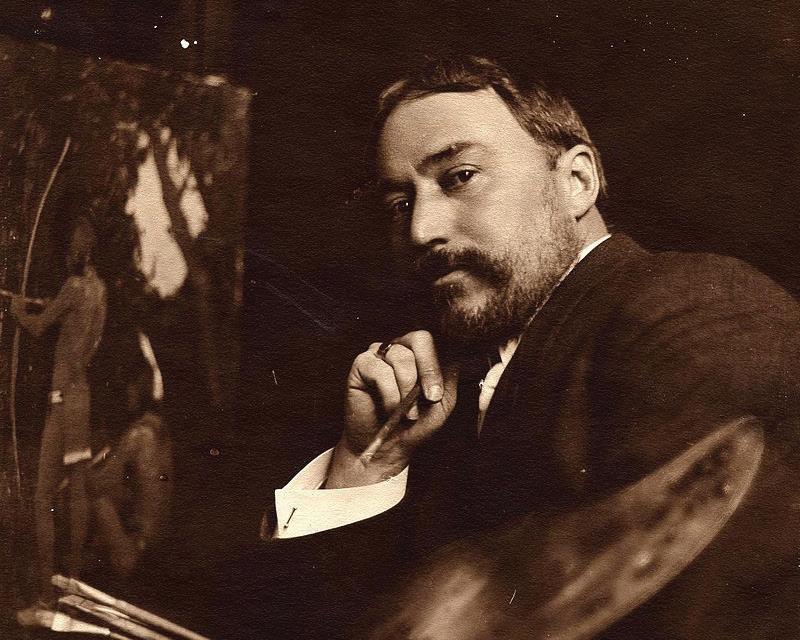
1866–1936
E.I. Couse was born in Saginaw, Michigan, where he first started drawing the Chippewa Indians who lived nearby. Couse worked hard to pay for his art education, occasionally dropping out to earn money while attending the Art Institute of Chicago, and the National Academy of Design. In 1886 Eanger Irving Couse left for Paris to study at the Academie Julian, where he met the American artist, Joseph Henry Sharp, who often spoke of Taos. Couse met his future wife, Virginia Walker, an illustration student in Paris, in 1887, and they were married in 1889. Moving back to the United States, the couple settled in Washington State at Virginia’s family ranch. Couse was interested in attempting to create a painting with Native American indians as the subject matter, eventually producing a historical work titled “The Captive” based on an incident known as the “Whitman Massacre”. This painting was shown at the Paris Salon in in 1892 and is now part of the permanent collection at the Phoenix Art Museum. In 1893 Couse and his wife moved back to France, where they remained in a small coastal town in Picardy for three years as he continued to paint in the small art colony. Their son Kibbey was born there prior to the family’s return to the United States.
15"×21¼" (unframed) | 30½"×36¾" (framed) Watercolor
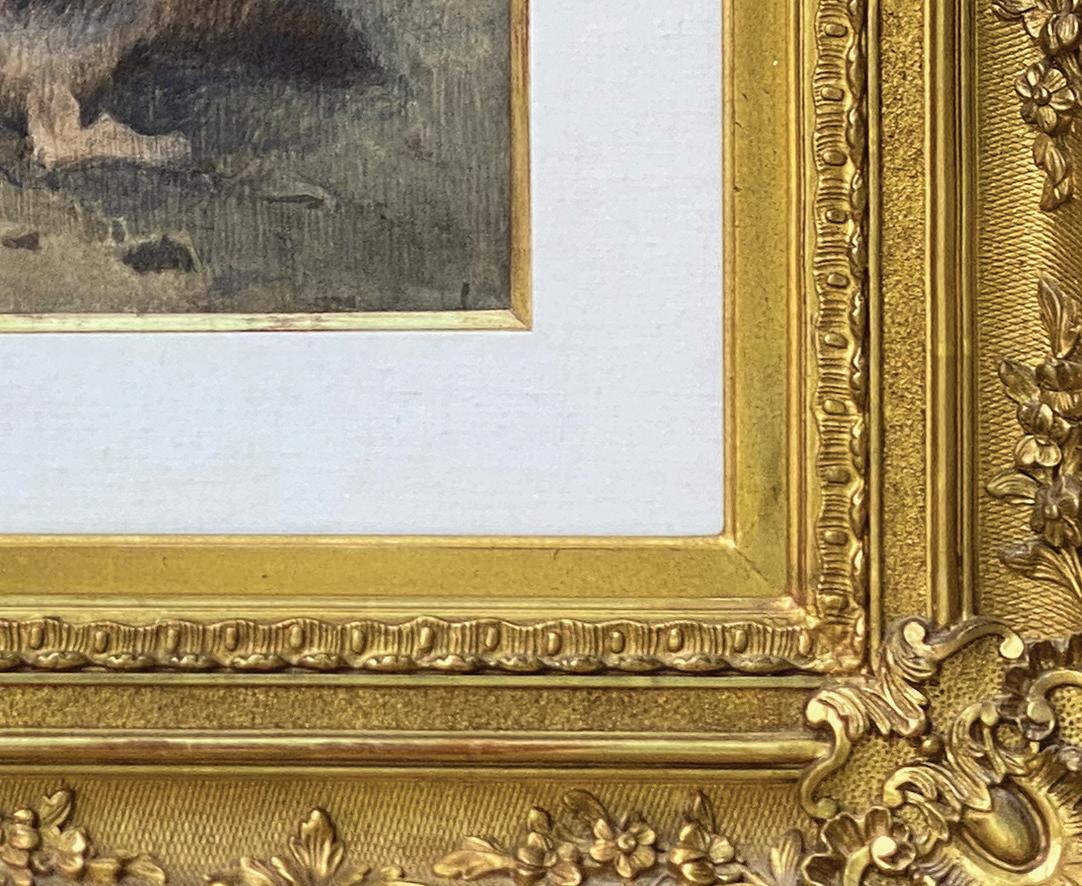







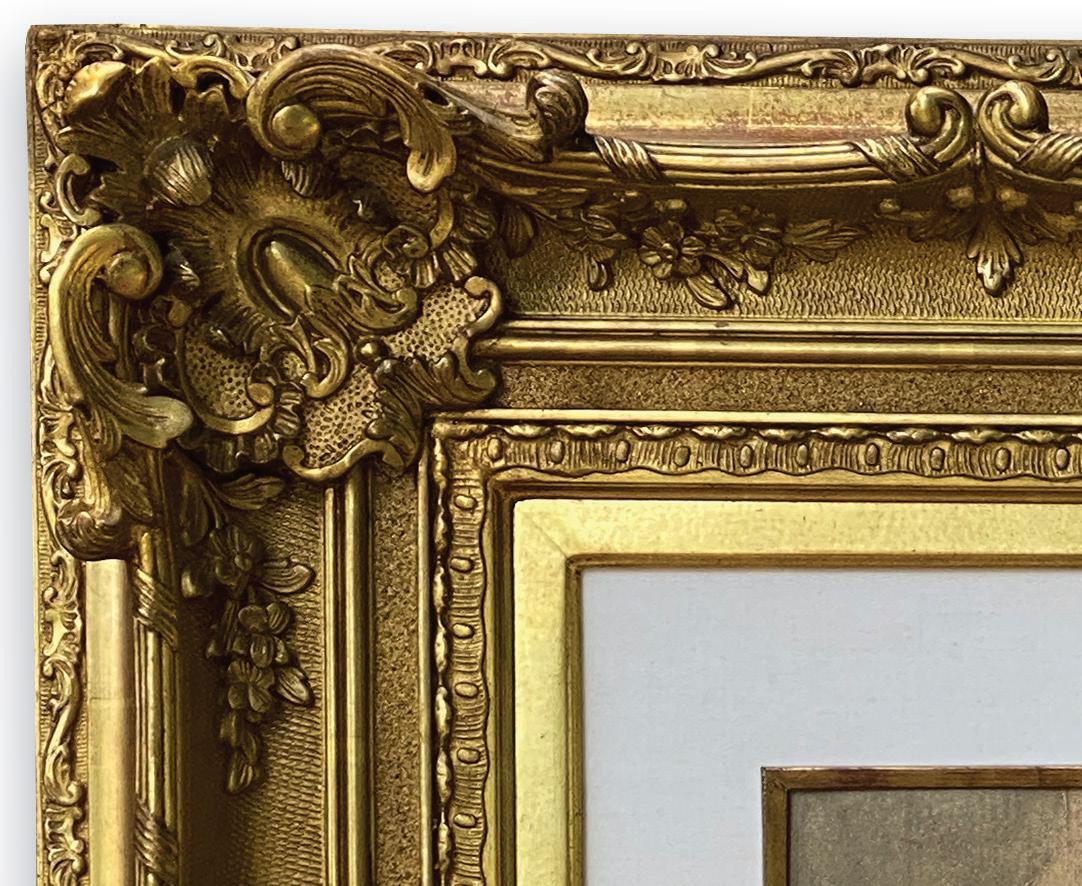 Claggett /Rey Gallery
“The Tom Tom Player”
Claggett /Rey Gallery
“The Tom Tom Player”

Couse would become a frequent visitor and resident of Taos from 1902 on, when he heard about the town from his friend Ernest Blumenschein. He focused primarily on paintings of the Indigenous people who lived in the surrounding area. In 1912 when the historically important Taos Society of Artists was formed, Couse was elected its first President. The original founding members of the group, known collectively as the “Taos Six” included Couse, Joseph Henry Sharp, Oscar Berninghaus, Bert Geer Phillips, W. Herbert Dunton, and Ernest Blumenschein. Later members included E. Martin Hennings and Walter Ufer.
E. Irving Couse is best known for his intimate images of Native Americans in moments of spiritual ceremony and quiet repose.
“The
15"×21¼" (unframed) | 30½"×36¾" (framed) Watercolor
Claggett/Rey GalleryTom Tom Player”
1865–1940
Sydney Mortimer Laurence was the George Inness of Alaska, specializing in tonalist, poetic paintings of the Alaskan wilderness and waterways and of the solitary daily lives of the region’s inhabitants. His beginning art career read like that of a textbook academician: during the 1880s in New York, he exhibited works at the National Academy, helped found the American Fine Arts Society, trained with the marine painter Edward Moran, and studied at the Arts Students League; for his crowning “expat experience,” he then moved with his wife to an artists’ colony in Cornwall, England. Likely it was Laurence’s subsequent adventurous experiences as an artistwar correspondent in Africa and China that triggered his wanderlust and propelled him to settle in Alaska around 1903, leaving his family behind in England. By 1920 Laurence had become a veritable commercial painter, Alaska’s most famous artist with a booming studio in Anchorage, but his more modest early years in Cook Inlet, living in a makeshift camp at the foot of Mount McKinley, defined the soulful tenor of his landscapes. Laurence was interested in Alaska’s unique, sublime nature, and in addition to Mount McKinley, he frequently imaged the area’s noted light phenomenon, the aurora borealis.
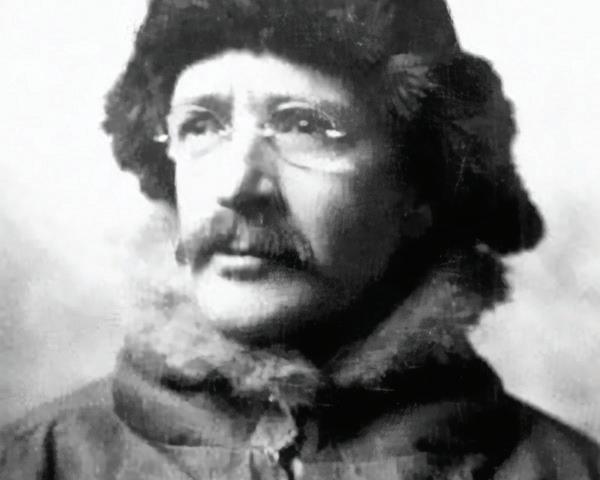
12"×16" (unframed) | 16"×20" (framed) Oil




 Claggett /Rey Gallery
“Mount McKinley”
Claggett /Rey Gallery
“Mount McKinley”

Denali (also known as Mount McKinley, its former official name) is the highest mountain peak in North America, with a summit elevation of 20,310 feet (6,190 m) above sea level. It is the tallest mountain in the world from base-to-peak on land, measuring 18,000 ft (5,500 m), and Earth’s highest mountain north of 43°N. With a topographic prominence of 20,194 feet (6,155 m) and a topographic isolation of 4,621.1 miles (7,436.9 km), Denali is the third most prominent and third-most isolated peak on Earth, after Mount Everest and Aconcagua. Located in the Alaska Range in the interior of the U.S. state of Alaska, Denali is the centerpiece of Denali National Park and Preserve.
The Koyukon people who inhabit the area around the mountain have referred to the peak as “Denali” for centuries. In 1896, a gold prospector named it “Mount McKinley” in support of thenpresidential candidate William McKinley; that name was the official name recognized by the federal government of the United States from 1917 until 2015. In August 2015, 40 years after Alaska had done so, the United States Department of the Interior announced the change of the official name of the mountain to Denali.
Claggett/Rey Gallery
1866–1955
William Robinson Leigh was born in Berkeley County, West Virginia and began drawing at an early age. When he was twelve, W.W. Corcoran (founder of the Corcoran Gallery of Art) paid Leigh $100 for a drawing. After three years of training at the Maryland Institute of Art in Baltimore, he left for Europe to study. Most of his twelve years in Europe were spent studying at the Royal Academy in Munich. In 1897, after Leigh returned to New York, he made his reputation as an illustrator for leading national magazines.
Leigh fulfilled a childhood dream of going west when Schribner’s sent him to North Dakota on assignment. During the next twenty-nine years, Leigh returned to the west often, sometimes on assignments and sometimes on his own. Some of his favorite subjects were the lands of the Hopi and the Navajo. He painted with the southwestern palette of soft pinks, purples, reds, blues, and yellows. The critics who had never been west, complained that his colors were too brilliant and ostentatious. Critics’ initial hesitancy aside, Leigh has become one of the most celebrated painters to capture the American west, noted for both his contributions to both illustration and fine art.
“Moki Girl Looking Over the Canyon” 10"×13" (unframed) | 17"×20" (framed) Oil
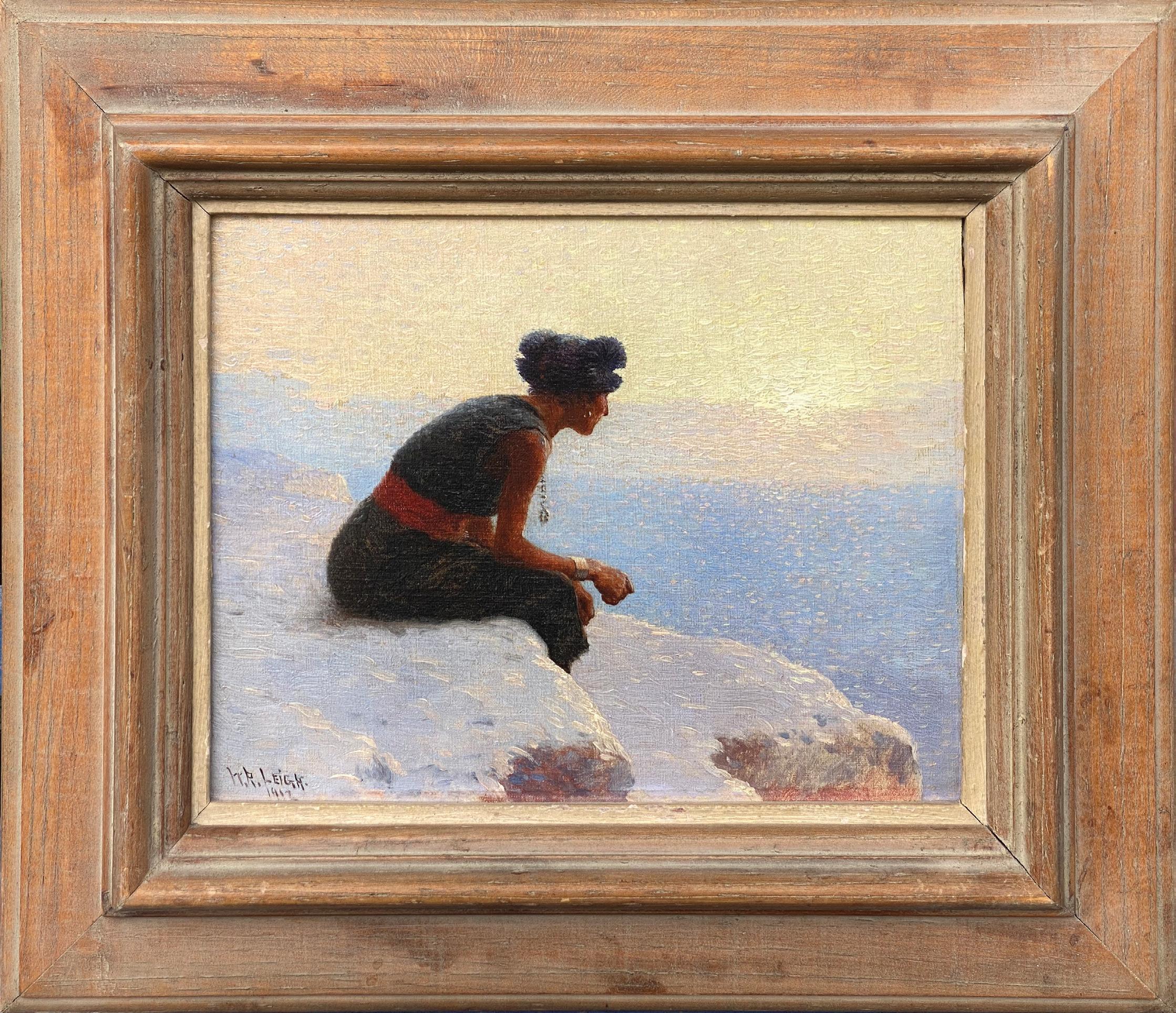




 Claggett /Rey Gallery
Claggett /Rey Gallery
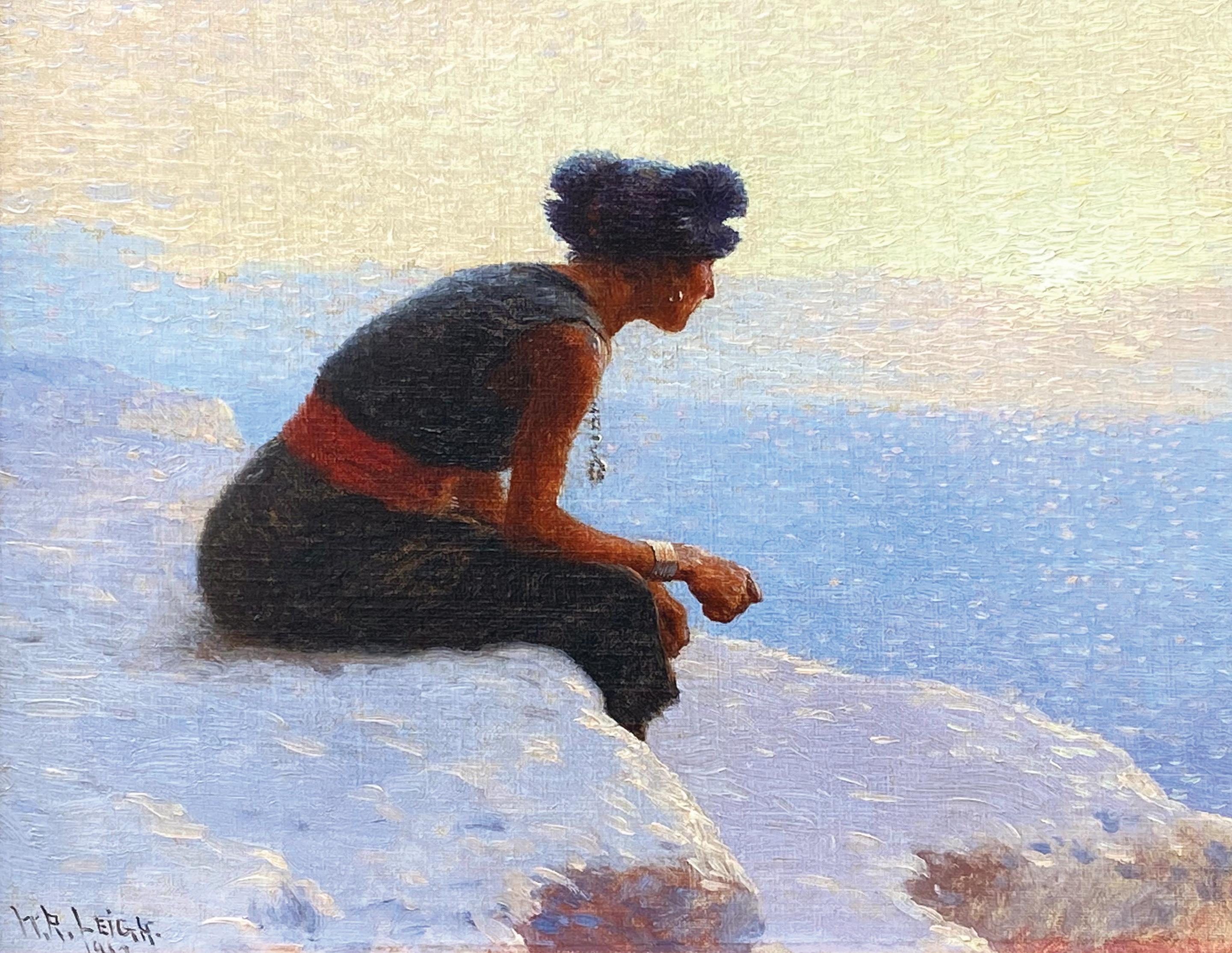
“Moki Girl Looking Over the Canyon” depicts a young Indian woman as she gazes out over the canyon lands of her people as the sun sets. Her traditional dress and hairstyle identify her as a member of the Moki pueblo as she watches the sun descend.
“Moki Girl Looking Over the Canyon” 10"×13" (unframed) | 17"×20" (framed)
Claggett/Rey Gallery
1810–1874
Traveling with the American Fur Company expedition to the annual fur trappers’ and traders’ rendezvous of 1837, Miller compiled an unparalleled visual record of the soon-to-be heavily traveled Oregon Trail, the Rocky Mountains, the fur trade, and Native Americans of the West. A romantic painter of epic proportions, Miller produced huge oil paintings from his fresh and action-filled sketches. His large canvases of buffalo hunts, trappers around the campfire, the Green River, and the dramatic Snake Indian cavalcade at the foot of the Rockies stunned sophisticated New Yorkers, who were accustomed to the calmer canvases of Thomas Cole and his contemporaries. Miller’s unique subject matter earned the young man acclaim as one of the most promising artists in the country. Today Miller’s work hangs in many permanent collections around the country, including the Boston Museum of Fine Arts, the Gilcrease Institute of American History and Art, and the Amon Carter Museum, Fort Worth.
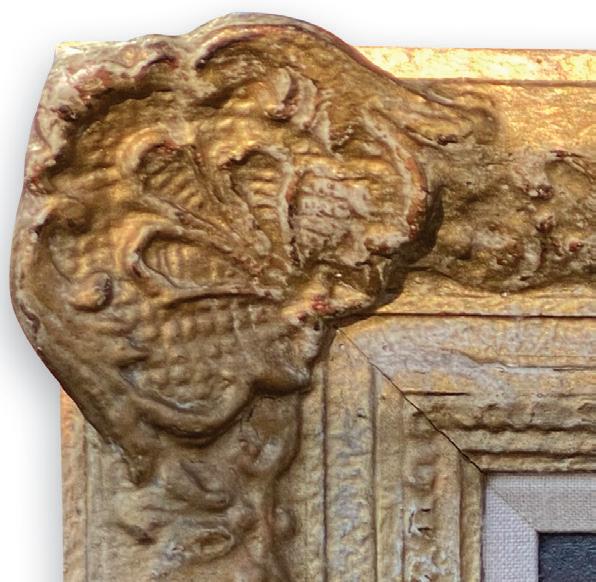





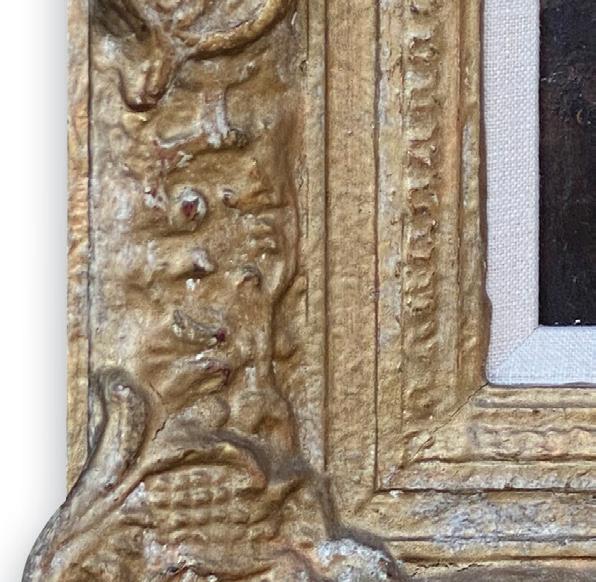

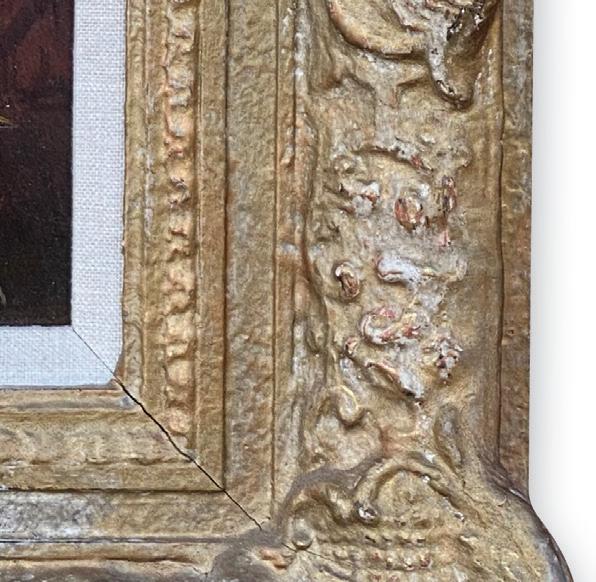

 Claggett /Rey Gallery
“Portrait of Captain Stewart with Indians by Campfire” 8¾"×6" (unframed) | 16½"×14½" (framed) Oil
Claggett /Rey Gallery
“Portrait of Captain Stewart with Indians by Campfire” 8¾"×6" (unframed) | 16½"×14½" (framed) Oil

Sir William Drummond Stewart, Scottish aristocrat and adventurer, hired Miller to accompany him and record his hunting journey to the Rocky Mountains.That same year, along with representatives of the American Fur Company, they ventured as far as Fort William and Green River.
Claggett/Rey Gallery “Portrait of Captain Stewart with Indians by Campfire” ~8¾"×6" (unframed) | 16½"×14½" (framed) Oil1886–1953
F. Winold Reiss was a German-born American artist and graphic designer. He was born in Karlsruhe, Germany, the second son of Fritz Reiss (1857–1914) and his wife. He grew up surrounded by art, as his father was a well-known landscape artist and his brother became a sculptor.
Reiss became a portraitist. His philosophy was that an artist must travel to find the most interesting subjects; influenced by his father and his own curiosity, he drew subjects from many peoples and walks of life. In 1913 he immigrated to the United States, where he was able to follow his interest in Native Americans.

“Long Time Calf Woman”
39"×26" (unframed) | 44½"×31½" (framed) Mixed Media



 Claggett /Rey Gallery
Claggett /Rey Gallery

In 1920 Reiss went West for the first time, working for a lengthy period on the Blackfeet Reservation. Over the years Reiss painted more than 250 works depicting Native Americans. These paintings by Reiss became known more widely beginning in the 1920 and to the 1950s, when the Great Northern Railway commissioned Reiss to do paintings of the Blackfeet which were then distributed widely as lithographed reproductions on Great Northern calendars. In 1931, and 1934-37, Reiss organized a summer art school, also referred to as an artists’ colony near Glacier National Park.
39"×26" (unframed) | 44½"×31½" (framed)
Mixed Media
Claggett/Rey Gallery“Long Time Calf Woman”
“Monday Morning”





18"×24" (unframed) | 26"×32" (framed)
Mixed Media



1859–1953
Joseph Henry Sharp (September 27, 1859 – August 29, 1953) was an American painter and a founding member of the Taos Society of Artists, of which he is considered the “Spiritual Father”. Sharp was one of the earliest European-American artists to visit Taos, New Mexico, which he saw in 1893 with artist John Hauser. He painted American Indian portraits and cultural life, as well as Western landscapes. President Theodore Roosevelt commissioned him to paint the portraits of 200 Native American warriors who survived the Battle of the Little Bighorn. While working on this project, Sharp lived on land of the Crow Agency, Montana, where he built Absarokee Hut in 1905. Boosted by his sale of 80 paintings to Phoebe Hearst, Sharp quit teaching and began to paint full-time.
16"×12" (unframed) | 20½"×16½" (framed)




 Claggett /Rey Gallery
“Crucita and Son”
Oil
Claggett /Rey Gallery
“Crucita and Son”
Oil
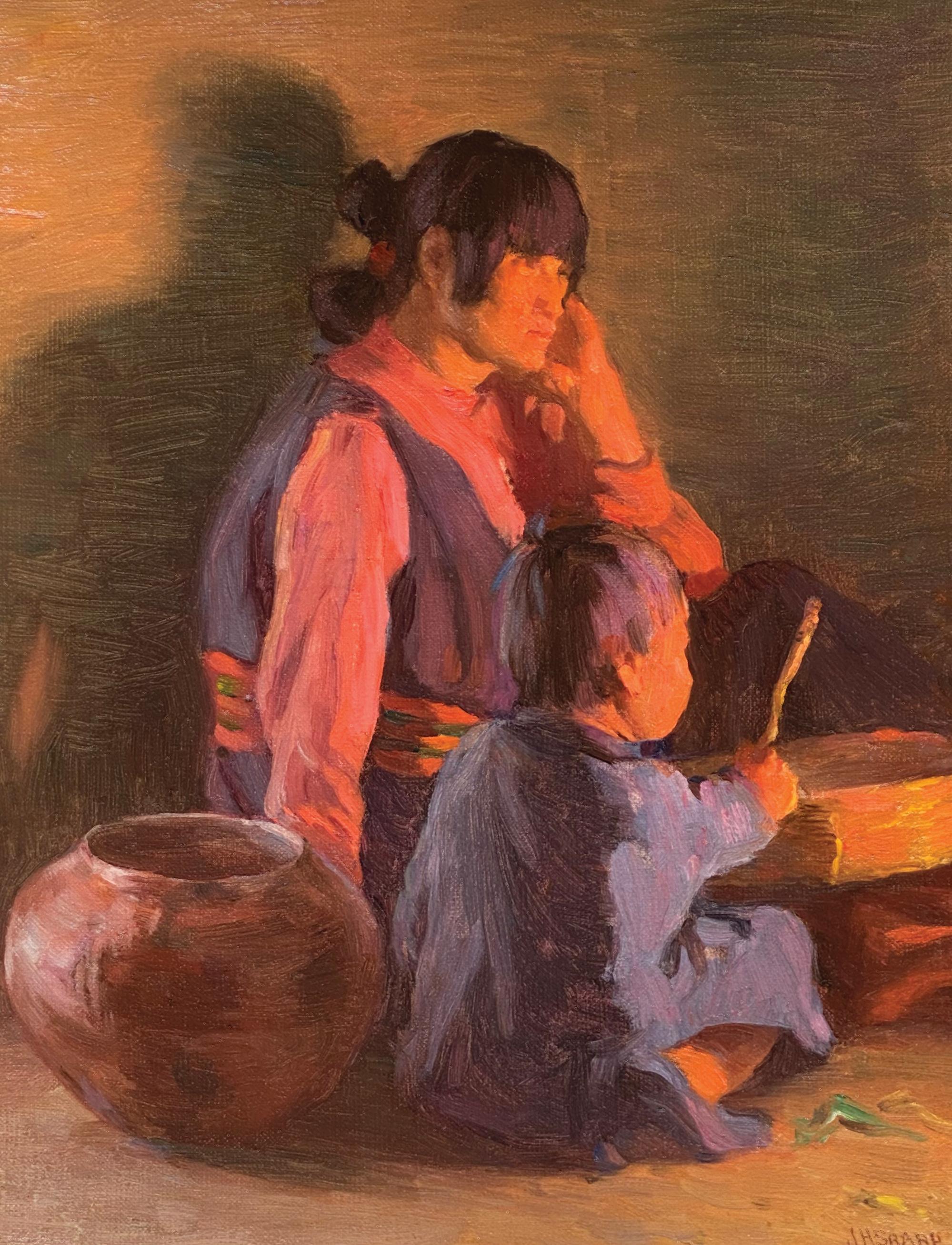
In 1909, Sharp bought a former chapel in Taos to use as a studio, near the house of the artist E. Irving Couse. In 1912 he and his wife moved to the area full-time. He built a house with studio near the chapel. Both artists’ homes and studios are part of the Eanger Irving Couse House and Studio—Joseph Henry Sharp Studios, which is listed on the National Register of Historic Places.
16"×12" (unframed) | 20½"×16½" (framed) Oil
Claggett/Rey Gallery “Crucita and Son”